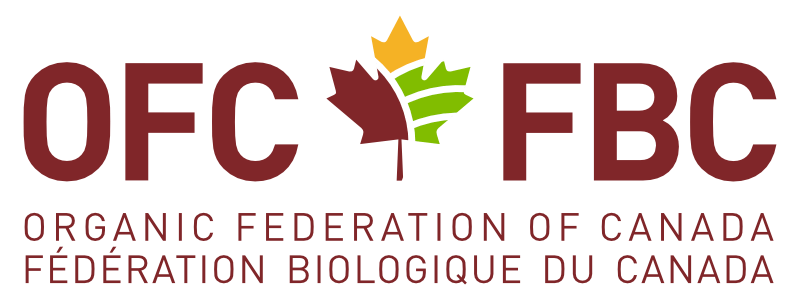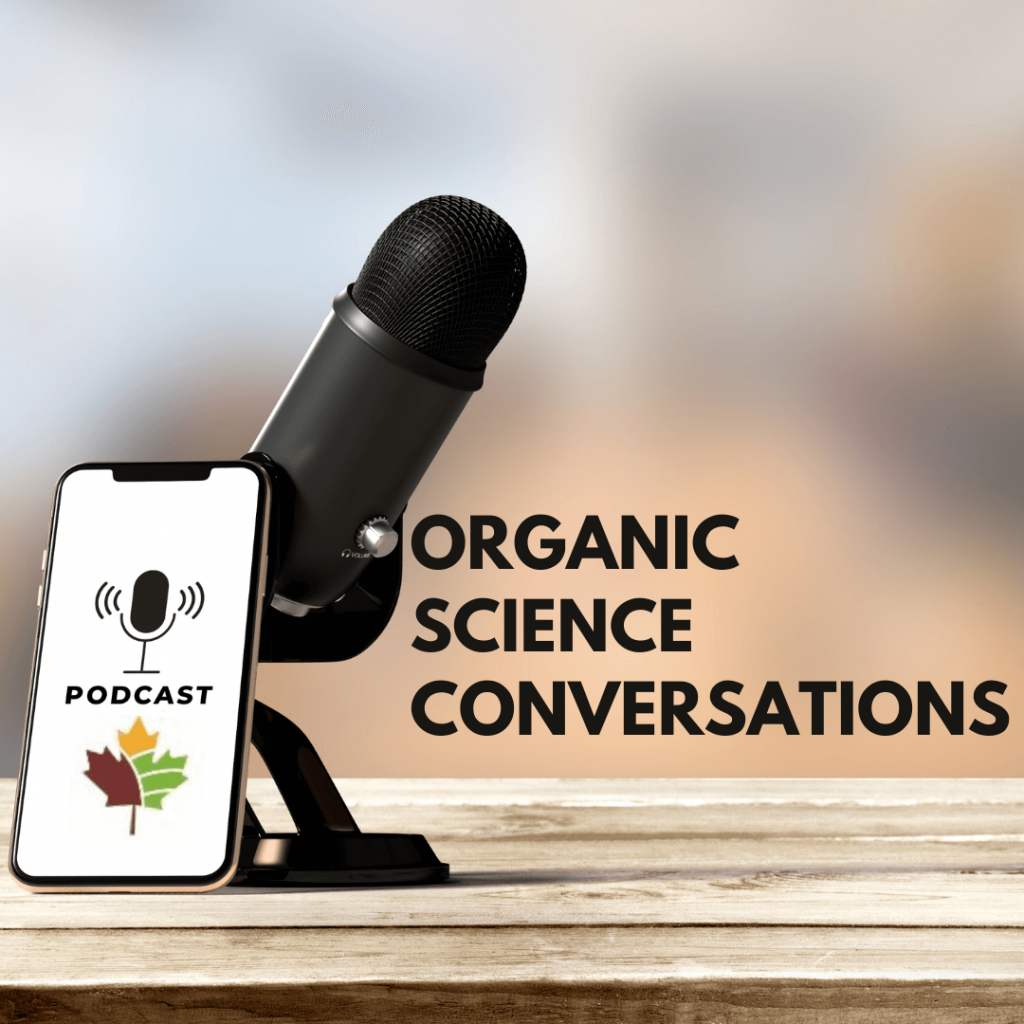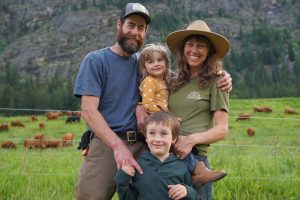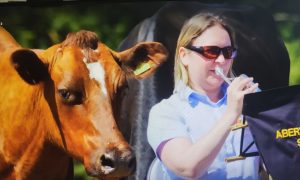Summary
Sprouts are increasingly sought after by consumers: their flavour and freshness make them a food often consumed on a daily basis.
That’s why an IRDA team led by Caroline Côté is looking into the production of organically grown shoots, young plants that pests appreciate as much as consumers.
Download a PDF transcript of this podcast.
Hello, this is Nicole Boudreau from the Organic Federation of Canada. Today, I have the pleasure of interviewing three researchers from the Institut de Recherche et de Développement en agroenvironnement (IRDA). They are Caroline Coté, researcher and coordinator of the organic department at the IRDA; Annabelle Firlej, who has a PhD in biology and is an entomologist at the IRDA; and Maxime Lefebvre, who has a PhD in plant science and is a professional researcher in weed science and organic farming at the IRDA.
Hello Caroline! Hello Annabelle! Hi Maxime!
Hello!
The name of your research activity within the Organic Science Cluster 3 is “development of an organically managed baby greens production system: a multidisciplinary approach.” We have three researchers for this research activity. Could you describe each of your specific roles?
Caroline – Yes, of course. Since we wanted to have a multidisciplinary approach, we have people working in water management with Carl Boivin and his team [IRDA/Québec]. For insect control, we work with Annabelle Firlej, and for weed control, with Maxime Lefebvre, who is part of Maryse Leblanc’s team.
Baby greens are an increasingly popular product with consumers. What are the challenges of baby greens production?
Caroline – Conventional baby greens production is already very important in Quebec and the demand for organic products is becoming just as significant. The production takes place in muck soil, a type of soil where, in Quebec, organic production is less common. We wanted to bring the team together to develop a management system to ensure that we find the best practices to both fertilize the crops and control pests.
What is your approach to pest control in this research activity?
Caroline – We have two experimental sites, the first of which has been in place for five years. These are long-term research sites that allow us to see the effect of our practices over the long term. This is particularly important in organic agriculture because we alter soil fertility and microbial communities over time. The site that has been in place for five years has been used for carrot production for two years, and then for lettuce and spinach baby greens production for the last three years.
Different cover crops are grown, either oats or forage peas, and compared to using no cover crops at all. For each type of cover crop, different fertilization approaches are being evaluated: applications of chicken manure pellets, compost and a control that does not receive these fertilizers. Cover crops are important, especially in muck soil production, because this type of soil is very susceptible to wind erosion. There are long-term soil losses due to wind erosion, which are exacerbated by the oxidation of organic matter. The potential effect of cover crops on insects or weeds is also evaluated. Yields and the different approaches to pest control are evaluated.
The second site, which has been in operation for two years, has been used to grow lettuce and arugula. The cover crops being evaluated are rye and an oat-buckwheat mixture. All plots are fertilized in the same manner [as the first site].
So, there are different cover crops and different baby greens varieties on the two sites?
Caroline: Yes, lettuce and spinach on the first site, and lettuce and arugula on the second site. Since the production season for baby greens is very short, about three weeks, we can do two or three production tests each year.
Although the production cycle is relatively short, pests have time to establish themselves. What are the main pests in baby greens?
Caroline – Weed control is an important challenge in this type of production, as is the control of some insect pests.
Maxime – In the first experimental site, our role is essentially to evaluate the weed populations that have established themselves and see how these relate to the different cover crops and the method of fertilization. The species found in these organic soil production sites are mainly purslane, stinkweed and lamb’s-quarters. These are common weeds that could potentially reduce yields if no action is taken.
And what are your strategies for controlling these weeds?
Maxime – The strategies are further evaluated at the second experimental site where the objectives are really to optimize the intervention of false seedbed pre-sowing cultivation [also called “stale seedbed” cultivation].
From the time the beds are prepared to the time the crop is going to be seeded, we try to optimize the false seedbed technique, which is using tillage to stimulate weed germination and then destroy the weeds. The objective is to reduce the number of weeds that will establish in the crop. The effectiveness of various tillage equipment, including the basket weeder and the weeder harrow, are being evaluated. We’re also testing an acetic acid biopesticide to see if weed control can be achieved when the soil is not tilled. These are tools that we evaluate by looking at how weeds establish themselves in the crop.
So, your strategy is to let the weeds germinate, kill them, and then plant your greens?
Maxime – Exactly, and then at the same time, we try to understand which species germinate and when during these interventions. We try to model weed emergence in order to understand, after tillage, how much each species will germinate. This will allow us to plan our false seedbed operations to save time and reduce weed populations.
But since you’re in muck soil, can the cultivation contribute to erosion?
Maxime – Actually, the cultivation is very shallow, in only the top two to three centimeters of the soil. The goal is only to pull out or cover the small weed shoots that are establishing. The goal is not to till the soil. If the results indicate that ?? tillage or cultivation is not necessary, it would be an advantage to the producers in terms of lower operating costs and weeding efforts.
Caroline – False seedbed cultivation is already practiced by producers, but we are looking at how and when to best intervene to reduce the number or practices that also represent costs to producers.
Annabelle, you are an entomologist. What is your role in this research activity?
Annabelle – My role is really to develop strategies to manage insect pests of baby greens. There is a very low tolerance in terms of damage caused by pests; more than 5% damaged baby greens is a very important threshold in organic baby greens production. So, we try to stay below 5% damaged leaves.
There are different ways to achieve this; the choice depends a lot on the crop. For example, we had spinach production on the first site, and arugula on the second site. The same organic products are not registered to control all the various pests, such as flea beetles, thrips, aphids, leaf-eating caterpillars and tarnished plant bugs. There is a large pool of insects that damage baby greens.
For example, there are no biopesticides registered for the control of the red-headed flea beetle, the main pest of spinach. One strategy has been the use of trap plants to attract the insect and divert it from the cash crop. We selected plants that are more attractive than spinach. We tested different mixtures of plants for three to four weeks: mixtures of amaranth, rapeseed and mustard. We also tested ornamental plants that attract the flea beetle. We are talking about coreopsis, zinnias and chrysanthemums. We are going to set up an experimental system to test these different mixtures and observe their power of attraction on the red-headed flea beetle. This first project has shown that the floral mixtures are very attractive to the red-headed flea beetle, more so than the other mixtures we tested. We will therefore use these results in the future.
It’s interesting because you promote biodiversity while creating a beautiful garden.
Annabelle -Yes, it’s a nice garden that we use to divert the pests. In the second site, for the arugula, we have a completely different approach. We are testing different strategies, because for arugula, we have registered pesticides, but we want to reduce their use to avoid creating resistance problems. We’ve compared management with biopesticides to management with mixed strategies. We use some biopesticides and, at the same time, we use natural enemies, which can devour certain insect pests.
The disadvantage is that the natural enemies need a certain amount of time to establish themselves. In three to four weeks, which is a long time in terms of crop production, we were able to establish which natural enemy combinations could be effective for this crop. We have introduced predatory mites by adding pupae and eggs. The mites in their larval stage will eat a lot of soft-bodied insects, such as aphids, thrips, etc. We’ve compared these different pest management options for arugula growers who are looking to reduce their use of biopesticides while staying below the 5% economic damage threshold.
Even if field production lasts three to four weeks, is there time for the pests to take an interest in the crop and for a predator population to develop?
Annabelle – Yes, there are predators that develop quickly and will be very active, such as mites that are very mobile. We are studying their behaviour in order to know how to introduce them at a strategic time. We can therefore rely on the effects of natural enemies, even over three weeks; that’s what’s very interesting.
Is this the first study of organic baby greens production in Quebec?
Annabelle – In terms of insect pests and their organic control methods, yes! There are experiments being conducted on farms, and producers themselves are testing strategies, but the results are not necessarily being published.
You benefit from the support of a major Quebec producer, Vert Nature, who currently specializes in conventional baby greens production, but who would like to develop organic production because the market is growing. Once the results of your research are conclusive, how could a baby greens producer apply the results of your activity?
Caroline – There are various means through written publications, conferences and work that is done in collaboration with the people at Phytodata. We also cooperate with agricultural producers. We have worked very closely with experts from Vert Nature because, as I often say, a producer is the best person to convince another producer. When you work in cooperation with producers from the start, it makes the knowledge transfer much easier.
But will a producer have to get armies of predators to control pests on baby greens?
Caroline – Different strategies are evaluated as part of the project; obviously, the economic aspects are always on our minds and on those of our partners. We have to find the best compromise for maintaining productivity considering the costs involved, and always with respect for the environment. For example, when no biopesticide is registered, we have to find alternatives; that is what Annabelle does for insect control.
And finally, what motivated you to undertake research in organic agriculture. What makes you passionate about this type of production?
Caroline – Organic agriculture takes us back to the basics of agronomic practice. We must have a good understanding of organic production systems because we don’t always have the tools that allow us to quickly correct a problem, such as a deficiency in nutrients, for example. You can’t use synthetic fertilizers to make up for nitrogen deficiencies; you have to build up reserves in advance.
This challenge is very important and interesting. For weed and insect control, we need to understand the interactions, why this pest is present and how we can control it when we don’t have the tools to respond quickly. We’re evaluating systems, and that’s why we’re working in a multidisciplinary way, to avoid, for example, using a cover crop that would encourage the presence of a pest in our field or that would result in more weeds. That’s what motivated us to work as a team with our industry partners. It is important to find practices that will not create another problem.
You also have to be strategic: a cover crop, while competing with weeds, can help recover nitrates that would otherwise end up in the environment. It is important to consider the production system from all angles.
Producers and consumers will surely appreciate the results of the research activity conducted by Caroline Coté, Annabelle Firlej and Maxime Lefebvre, all three from the Institut de recherche et de développement en agroenvironnement. Thank you!






